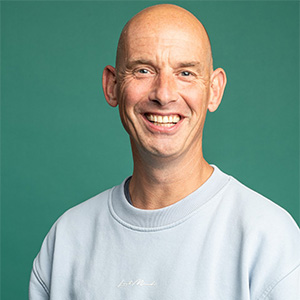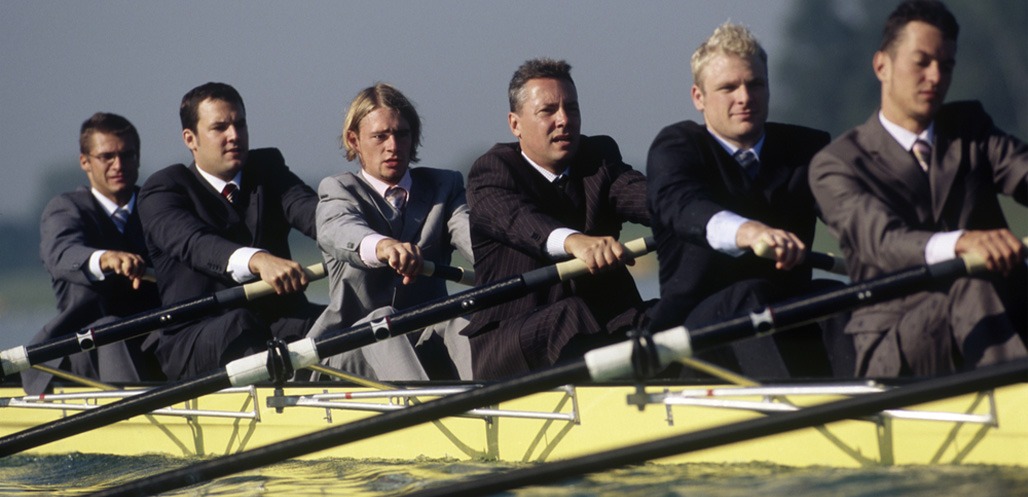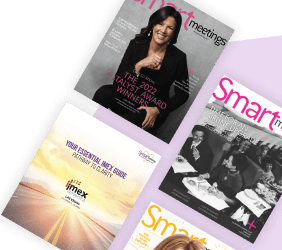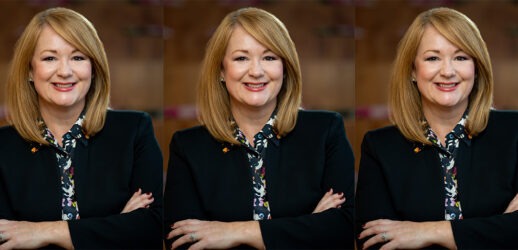Editor’s note: This article has been transcribed from video with AI and lightly edited.
One might look at an event almost like a person. Traditional events tend to follow a predictable pattern: you arrive, have coffee, enter a hall, listen to a keynote speaker, attend breakout sessions, maybe have lunch, then another speaker and go home.
But what if we treated an event like a person with their own desires and goals? If we view it this way, then the purpose of the event is not just to inform, but to invite people into something bigger.
To turn an event into an adventure, you need a central challenge and a hero—the participant—who’s on a journey. Rather than passive listeners, attendees become active co-creators.
Example:
Imagine author and speaker Simon Sinek delivering his talk about discovering your “why.” Now imagine that, instead of just listening, attendees receive a treasure map upon entering. They’re guided to five interactive stations, each helping them explore their own “why.” This changes the experience from passive learning to an emotional and personal quest.
In short:
- An event is about information.
- An adventure is about transformation.
How I Came to Realize the Power of Adventures
There are many ways I came to the realization of the power of adventure, but one stands out. I did a TED Talk about it (see below). It all started when I began receiving mysterious letters from an unknown sender. They said they needed my help, and each message led me deeper into a month-long treasure hunt.
Eventually, one letter instructed me to go to the railway station, order a coffee and give the name “Parsifal.” When I did, I was handed a code to a locker. Inside the locker was another letter telling me to board the next train to Amsterdam and open the next clue at Station Amstel.
Read More: New and Renovated: Seeking Adventure
The final message revealed this:
“The Holy Grail isn’t a physical object. It’s friendship and connection.”
When I arrived, one of my best friends, Michel Stein, was waiting with two tickets to Paris. That night, under the Eiffel Tower, we toasted to 10 years of friendship.
That was when I fully understood: A message becomes an adventure when it touches not just the head, but the heart.
A Great Example of Corporate Experience Design
There are many stories I could share, but here’s a short and powerful one involving Simon Sinek again.
Attendees came to a venue expecting a typical conference, where Sinek would speak about purpose and the “why.” But something unexpected happened: when some guests handed in their coats at the wardrobe, they received a mysterious coin. If they flipped it over, they saw a symbol.
Looking up, they noticed lockers with matching symbols. Inside the lockers? A treasure map.
The map led them on a journey through five experience stations across the venue, each one helping them explore their inner purpose. Some people crawled beneath the main stage wearing helmets with UV lights to discover deep personal questions. Others were lifted into the air during lunch to gain new perspectives.
What started as a day of listening turned into a journey of self-discovery.
How Can AI Help Create These Experiences?
AI has become a creative partner in our work. It’s not just for writing—it can:
- Generate full event programs
- Create visual storyboards
- Develop treasure hunts or challenge paths
- Produce images, videos, and interactive experiences
I regularly give workshops on how to use AI in event design. The key is to start experimenting. Let AI be your co-pilot in crafting meaningful experiences.
Read More: Why AI Might Mean Salvation for the Meeting Industry
What Are the Dark Edges of AI for Event Planners?
Great question. There are a few important warnings:
- Hallucinations: AI sometimes makes things up. Always keep a human in the loop to fact-check.
- Data concerns: Be aware of where your data is going and how it’s being used.
- Reality distortion: AI-generated stories and images can appear very real. As this power becomes available to everyone, trust in digital content declines.
This is why real-life events are more important than ever. In-person connection is the only way to build true trust and authenticity. Our job as event designers is to create those real-life, heart-level connections.
What Gives You Hope for the Future of Events?
Hope lies in the human heart.
As digital tools grow more powerful, the ability to meet in real life becomes even more valuable.
Trust is built in person—not on screen.
And that’s our mission: to design events that bring people together in meaningful, emotional, unforgettable ways.
—
 Nils Roemen believes your event has a story yearning to be told, complete with its own challenges to captivate attendees from the start.
Nils Roemen believes your event has a story yearning to be told, complete with its own challenges to captivate attendees from the start.
As an experience designer for the Experience Experts, he turns events into immersive adventures that transform attendees into active participants.





